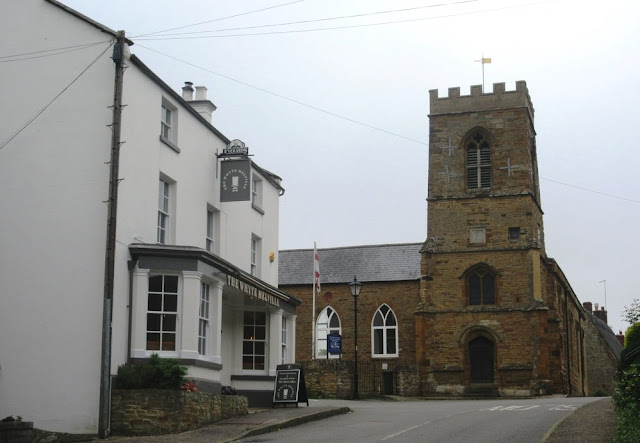Across the road from the kissing gate that admits you to the churchyard of the ruined church of St John outside the village of Boughton is a triangle of land enclosed by three roads.
This land is the old village green of Boughton and the original village stood around it.
The Victoria County History for Northamptonshire describes it:
Boughton Green was long associated with a fair, held annually, at least since it was granted to Henry Green in 1350, on the vigil, day, and morrow of St. John the Baptist; it used to be famed for brooms and wooden-ware, and the last day was given up to wrestling and other forms of sport, but during the last years of its existence it consisted merely of a large horse and cattle-fair and lost its social character. It was abolished during the War (1914–18); the horses formerly sold at Boughton are now sent to the cattle-market at Northampton; and the green has since been enclosed.The fair, once famous across England, is not all the green lost during the First World War.
Sacred Texts gives us the text of Mazes and Labyrinths, by W.H. Matthews from 1922. Matthews wrote:
At Boughton Green, in Northamptonshire, about half a mile from the village of Boughton and near the ruined church of St. John the Baptist, was, until recently, a turf maze of like design but having the innermost convolutions of purely spiral form (Fig. 61). It was 37 ft. in diameter and was called the "Shepherd Ring" or "Shepherd's Race." The "treading" of it was formerly a great feature of the three days' fair in June, an event dating from a charter by Edward III. in 1353.
In a "Guide-book to Northampton" by G. N. Wetton, published in 1849, the maze is spoken of as being in a neglected condition. In a later book, however, a novel named "The Washingtons," written by the Rev. J. N. Simpkinson in 1860, occurs the following passage: "He had just been treading the 'Shepherd's Labyrinth,' a complicated spiral maze traced there upon the turf; and was boasting of his skill, how dexterously and truly he could pursue its windings without a single false step, and how with a little more practice he would wager to go through it blindfold."
Another novel, "The Last of the Climbing Boys," by George Elson, contains a reference to it, in which it is spoken of as being "An attraction which was the origin of the fair"—a statement which it would be interesting to verify if possible.
Unfortunately, this famous relic was destroyed by some of our soldiers in training during the Great War; trenches were driven right across it, and practically all traces of it are now obliterated.The plan of the maze on Sacred Texts is rather small, so I have borrowed the larger one here from pages published by Michael Behrend. It comes from an article by a 19th century antiquarian.
If you want to see a similar maze today, go to Wing in Rutland.
So that ends my visit to Boughton. A ruined church, follies and much else - not bad for an area I had always assumed to be Northampton suburbia.



































